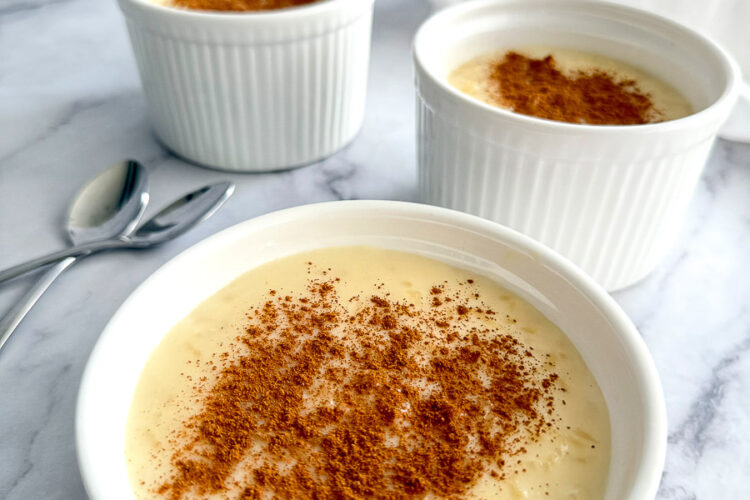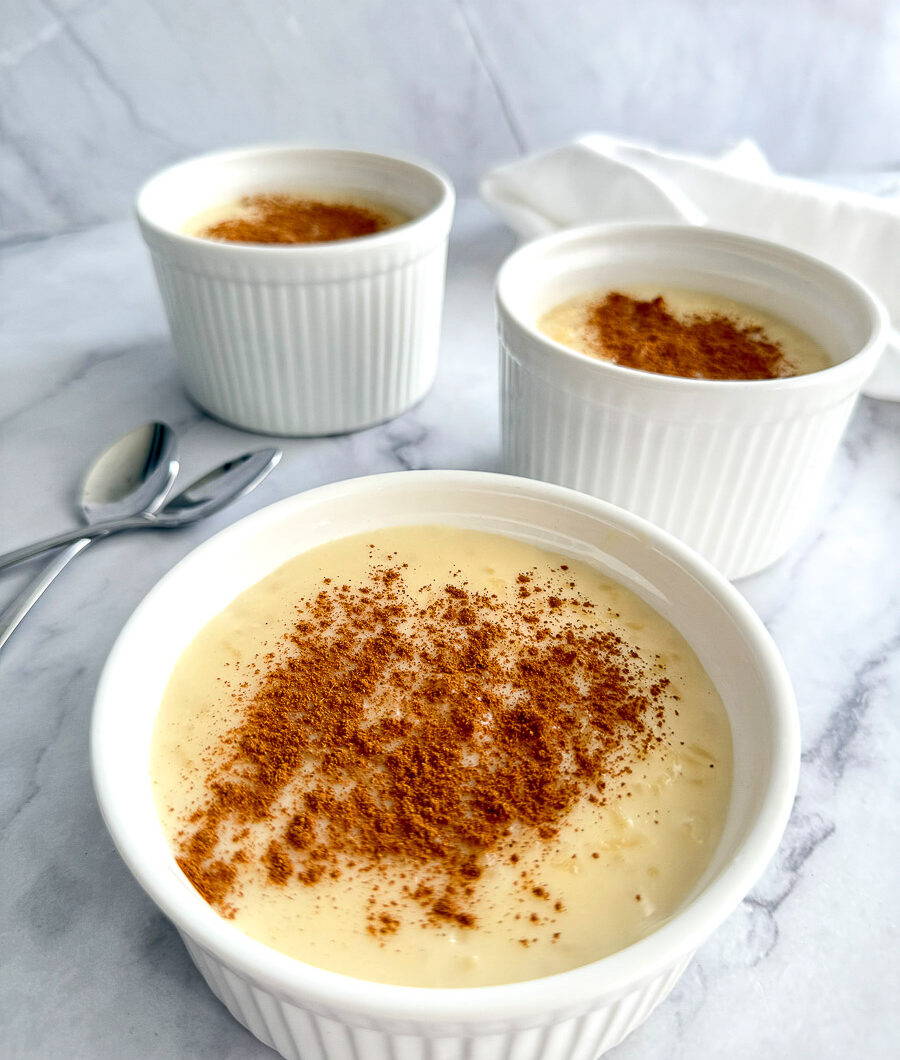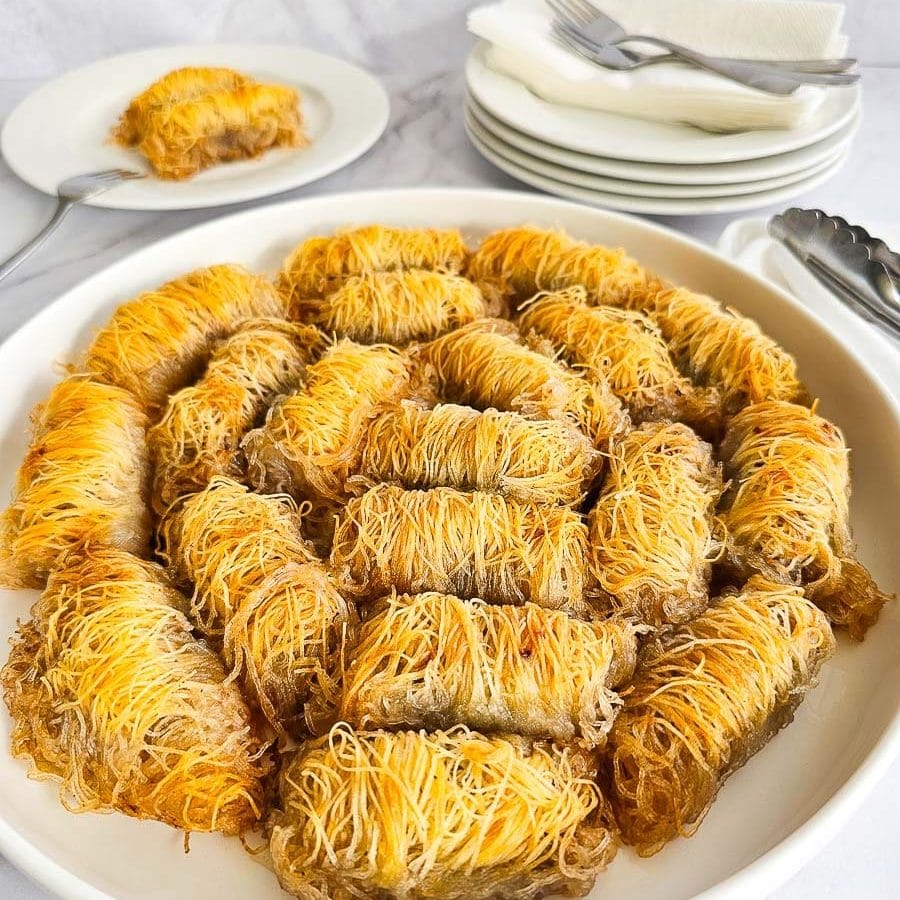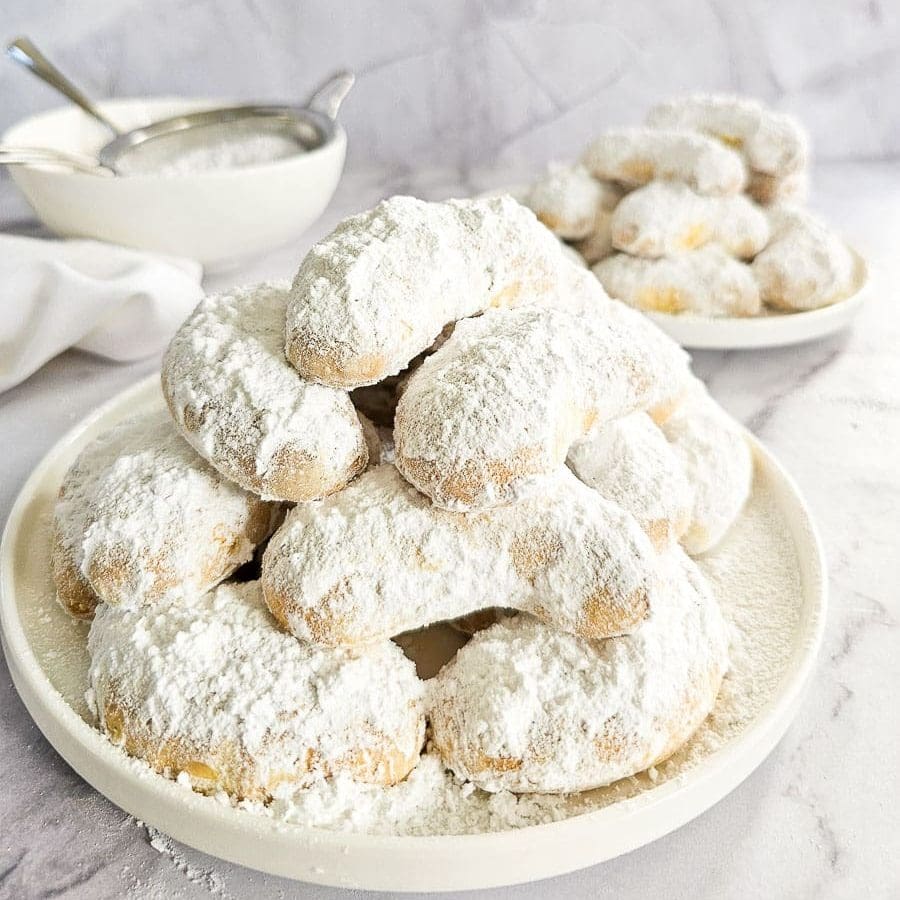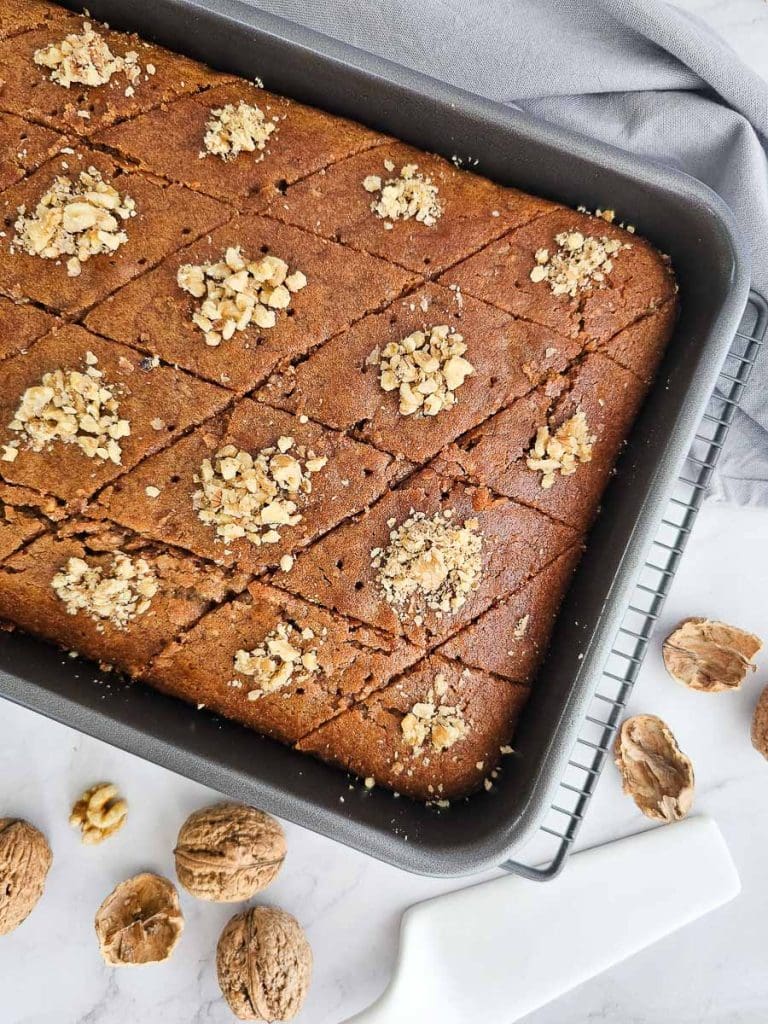This Greek Rice Pudding is thick, creamy and subtly sweetened with a hint of vanilla. Follow my simple step-by-step recipe here – it’s quick and easy to make and can be enjoyed warm or cold – as a dessert, snack, or even breakfast!
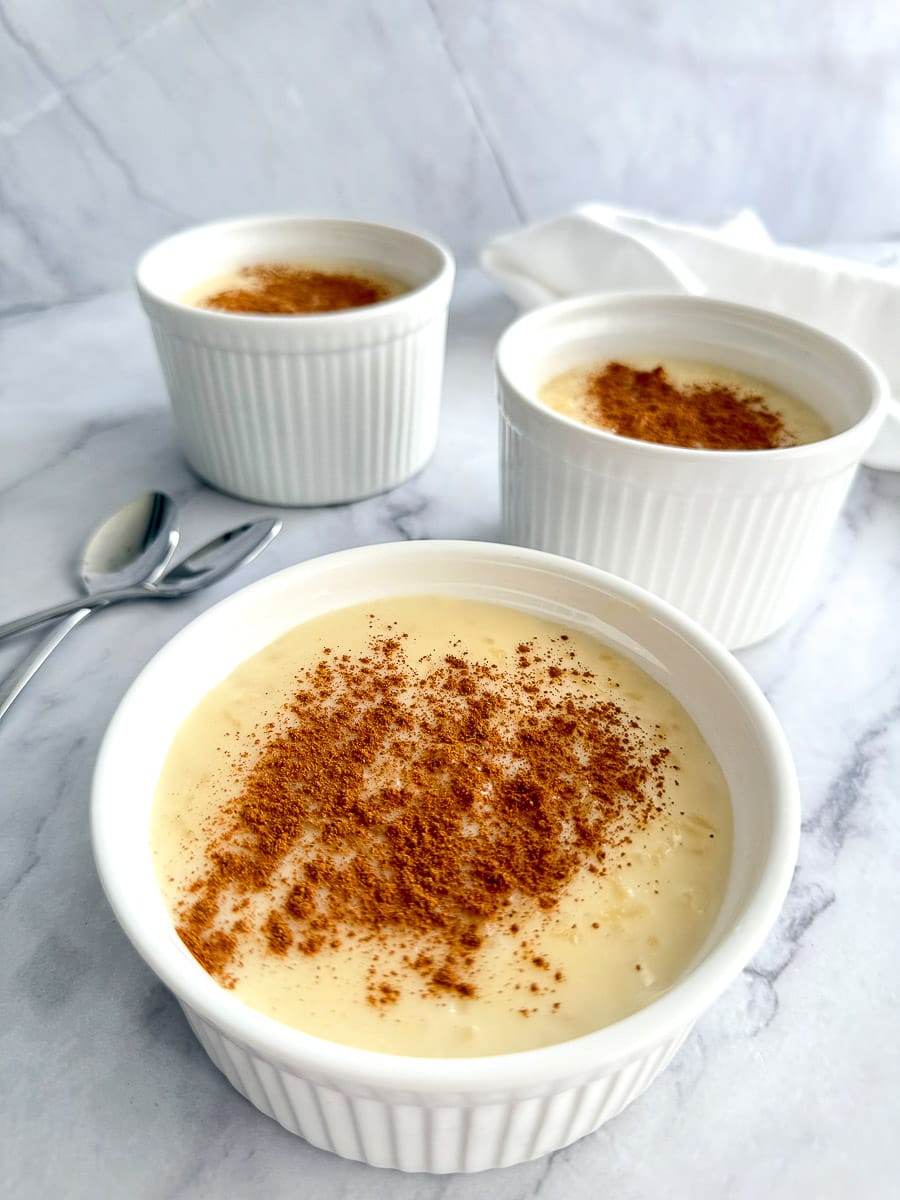
Almost every culture has its own version of rice pudding, and this is the Greek one I grew up with. Rizogalo (pronounced ree-ZOH-gah-lo) means “rice milk” in Greek, coming from the words rizi (rice) and gala (milk). This rice pudding brings back so many memories – my mum used to make it often when we were growing up, and later for her grandkids, who looked forward to it just as much as we did. She never followed a recipe—just trusted her instincts and tasted as she went. Her version was simple, with a smooth texture and just the right amount of sweetness. One thing that makes her Rizogalo a little different is a spoonful of custard powder. It’s not traditional, but both my mum and aunt would add custard powder along with cornflour to give the pudding a subtle vanilla flavour and a light golden colour. It’s so delicious with the custard powder that I make it the same way today.
Ingredients for Rizogalo (Greek Rice Pudding)
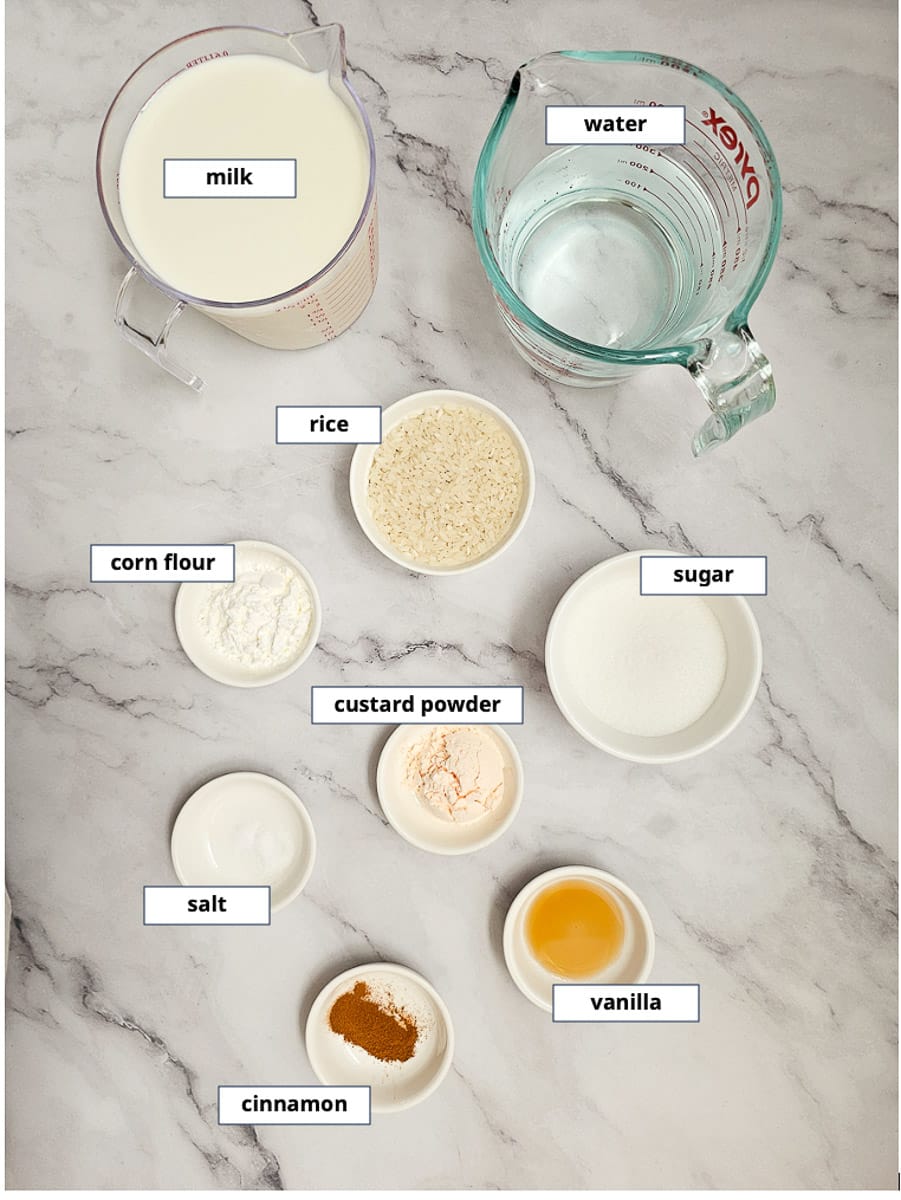
- Rice: I use medium grain rice because it releases starch and gives a nice creamy texture. You can also use short grain varieties such as Arborio rice, however, keep in mind that it releases more starch and makes the pudding thicker. It also requires a slightly longer cooking time to become tender, so you might need to add a little extra water as it cooks.
- Milk: Use whole milk for a richer and creamier result. You can substitute with lite milk for a lighter version, but the pudding won’t be quite as creamy. If you prefer a vegan option, almond, soy, or oat milk can be used, though they may slightly change the flavour and texture of the pudding.
- Sugar: I start with ¼ cup for this amount, but you can taste and add more at the end if you like it sweeter.
- Cornflour: Helps thicken the pudding and create a smooth texture. If you want to make it gluten-free, use only cornflour and skip the custard powder.
- Custard powder: Adds a subtle vanilla flavour and a light golden colour. It’s not traditional, but it’s a special addition my mum and aunt always used.
- Vanilla: Adds extra warmth and flavour. You can use vanilla extract, vanilla essence or vanilla powder, depending on what you have.
How to make Rizogalo (Greek Rice Pudding)
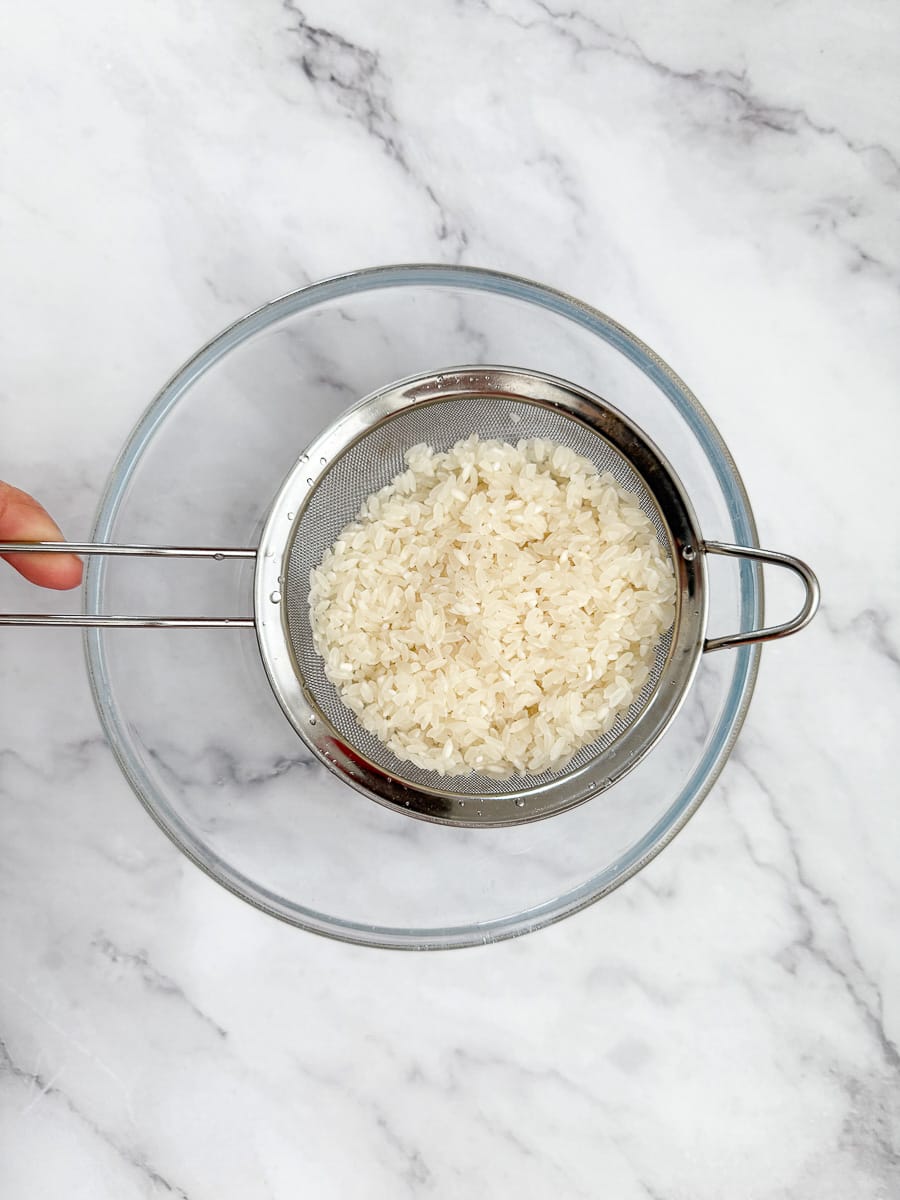
1. Lightly rinse the rice under cold water and drain.
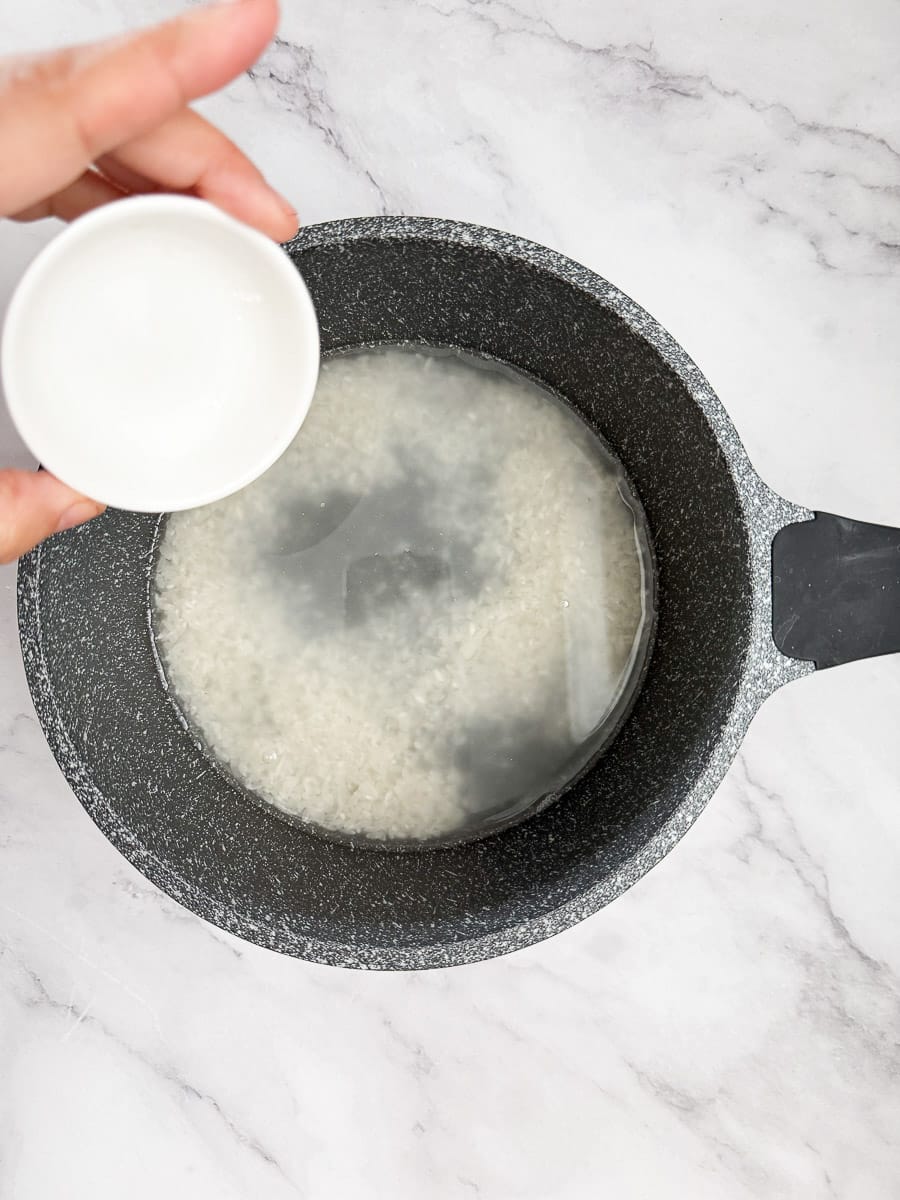
2. In a medium saucepan, combine the rice, water and a pinch of salt.
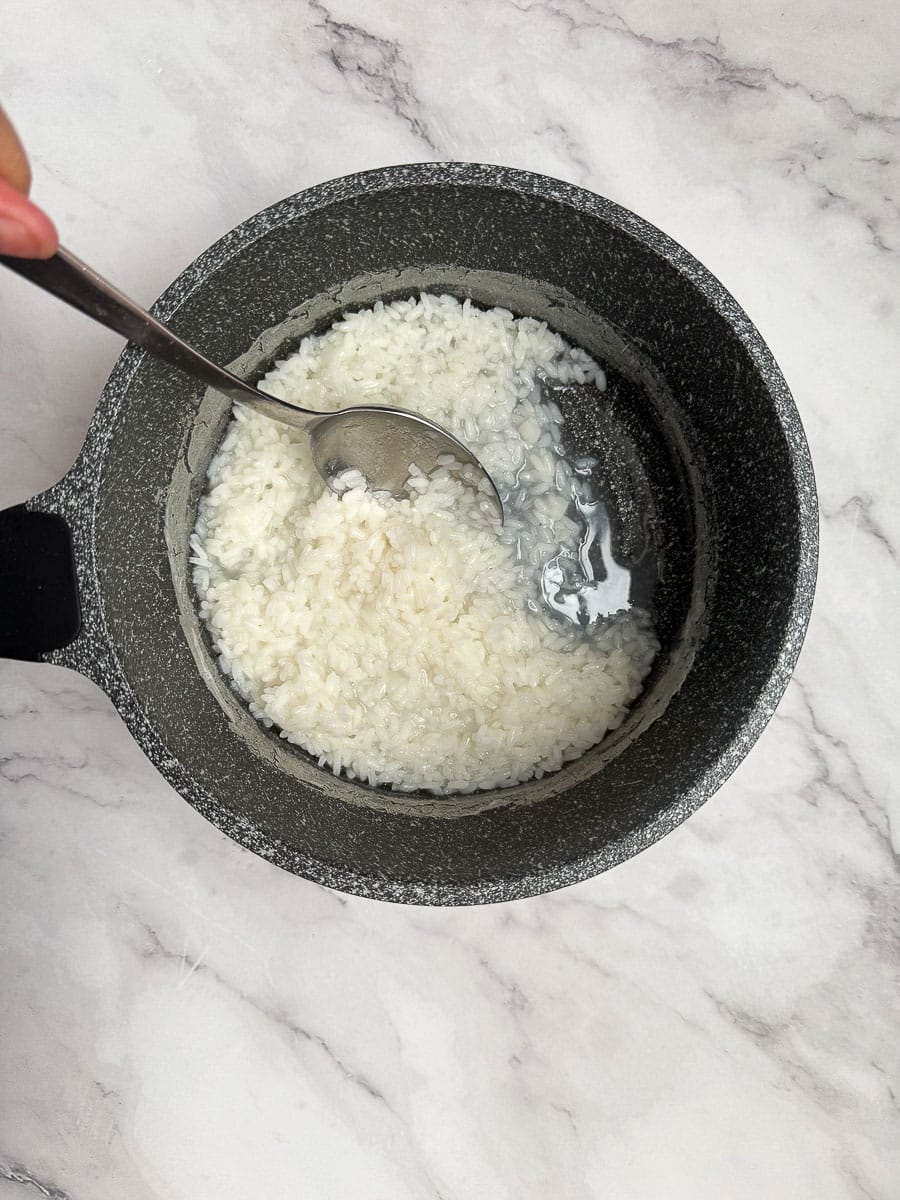
3. Bring to a boil, then simmer uncovered for 10-15 minutes, stirring occasionally, until most of the water has been absorbed and the rice is just tender.
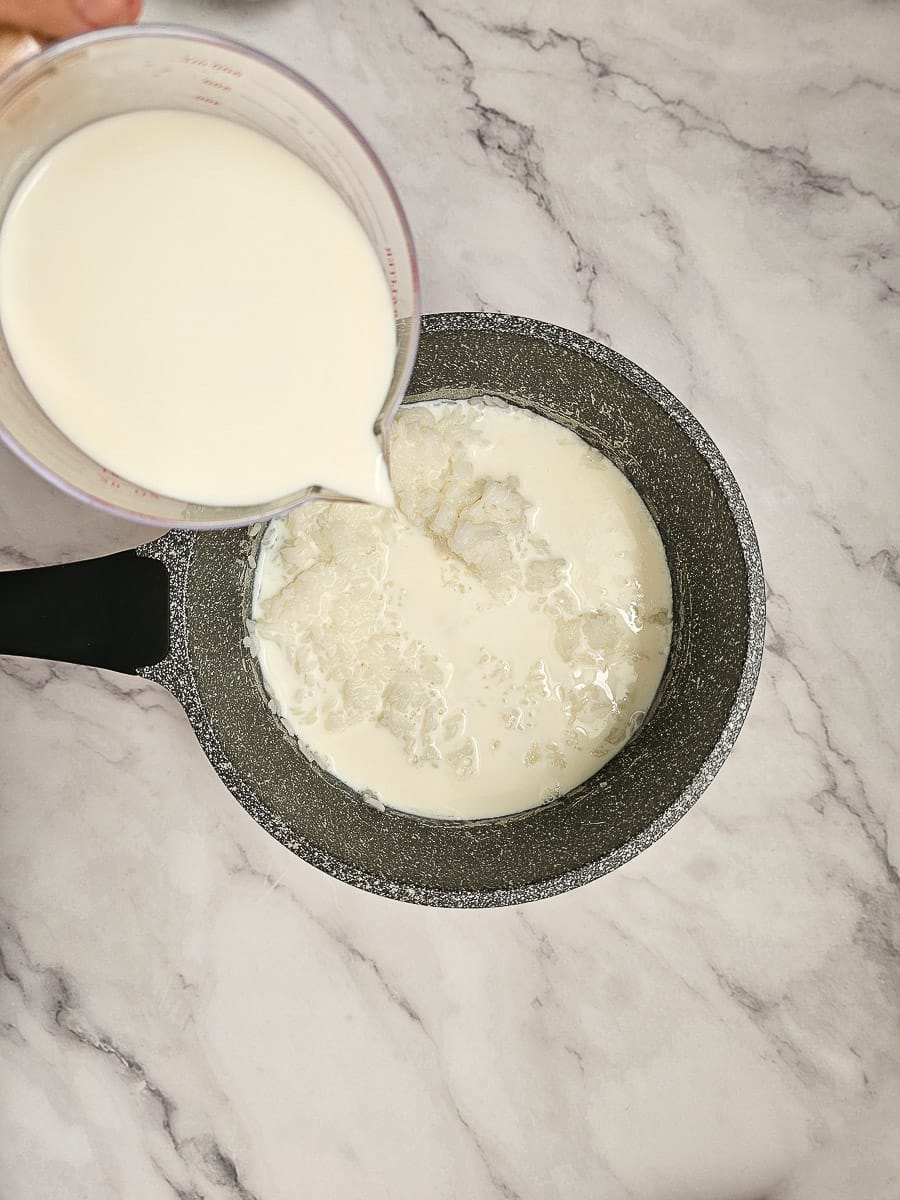
4. Stir in the milk.
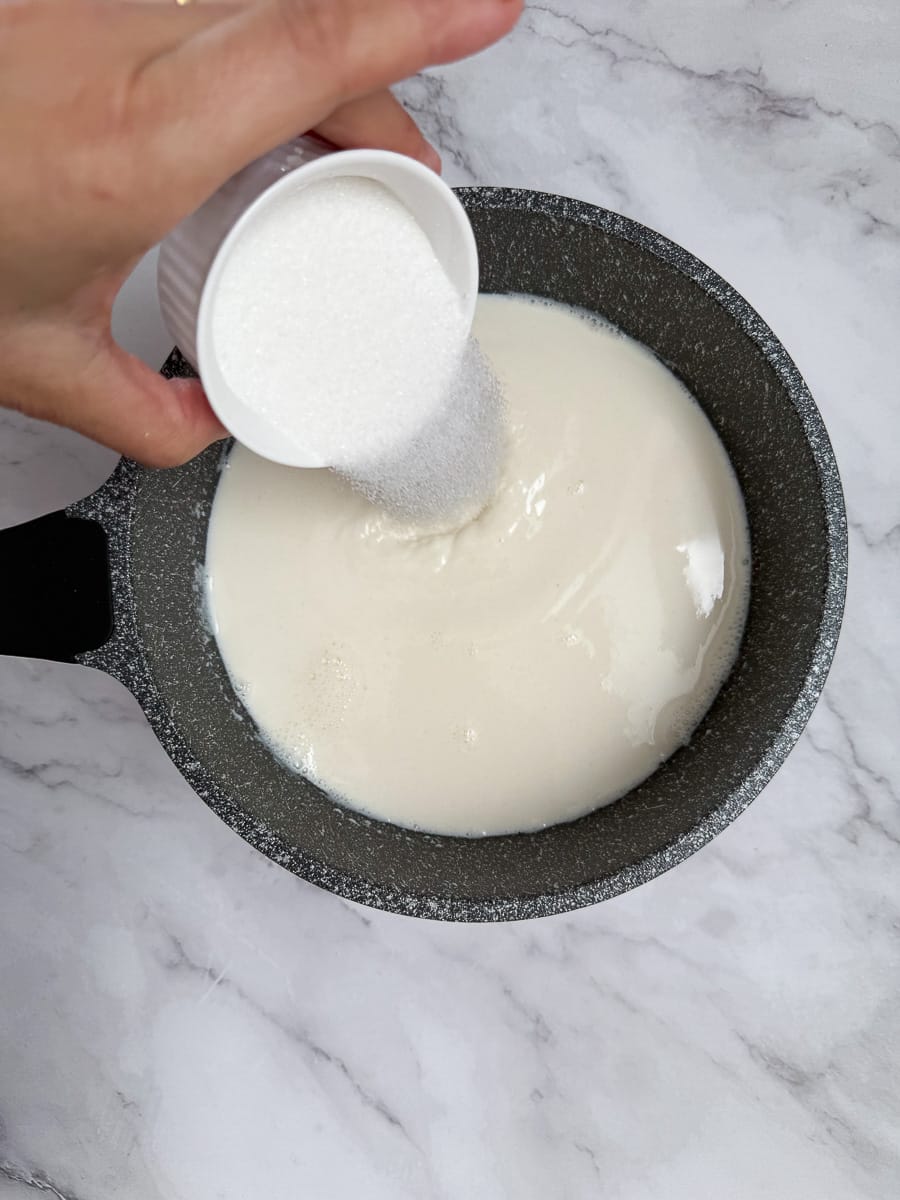
5. Stir in the sugar and bring to a boil.
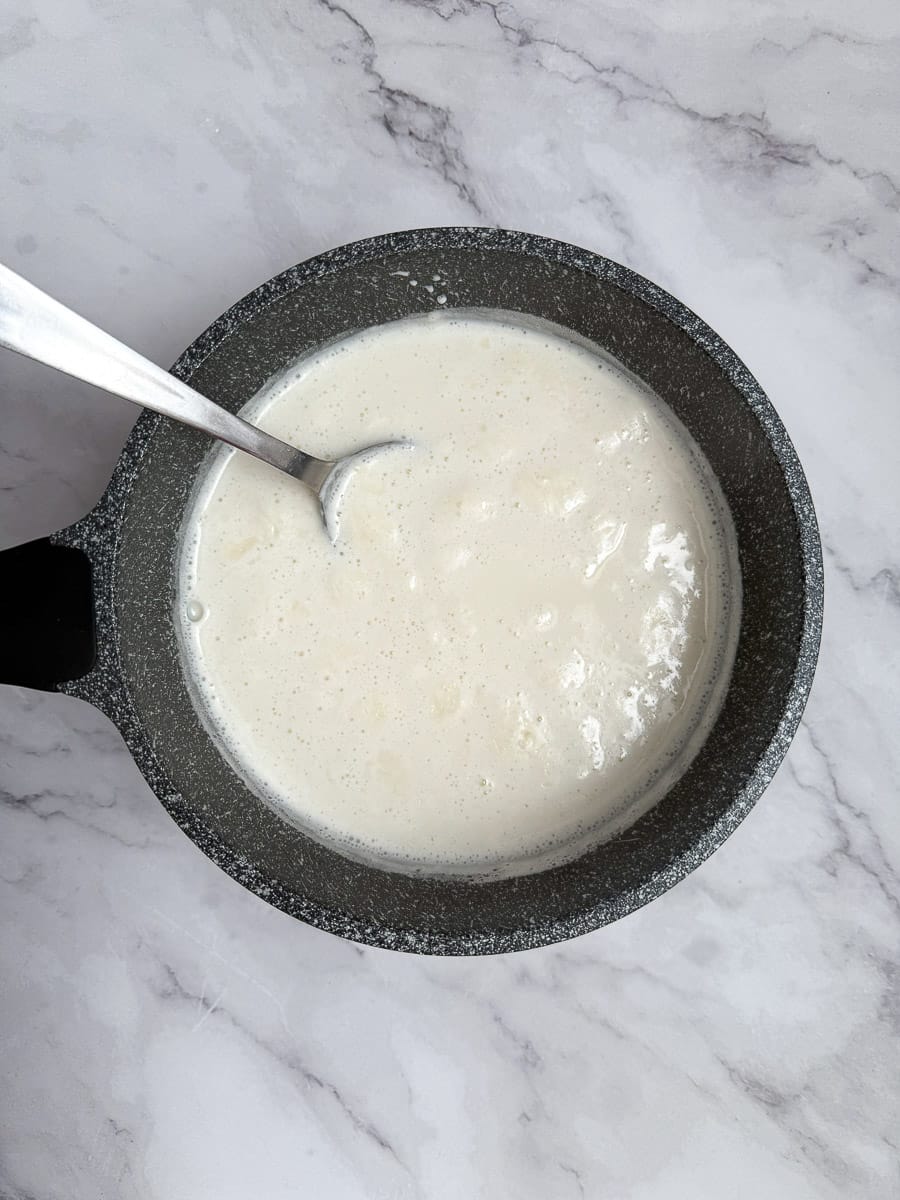
6. Reduce heat and simmer uncovered, stirring occasionally, more often as it thickens to prevent sticking.
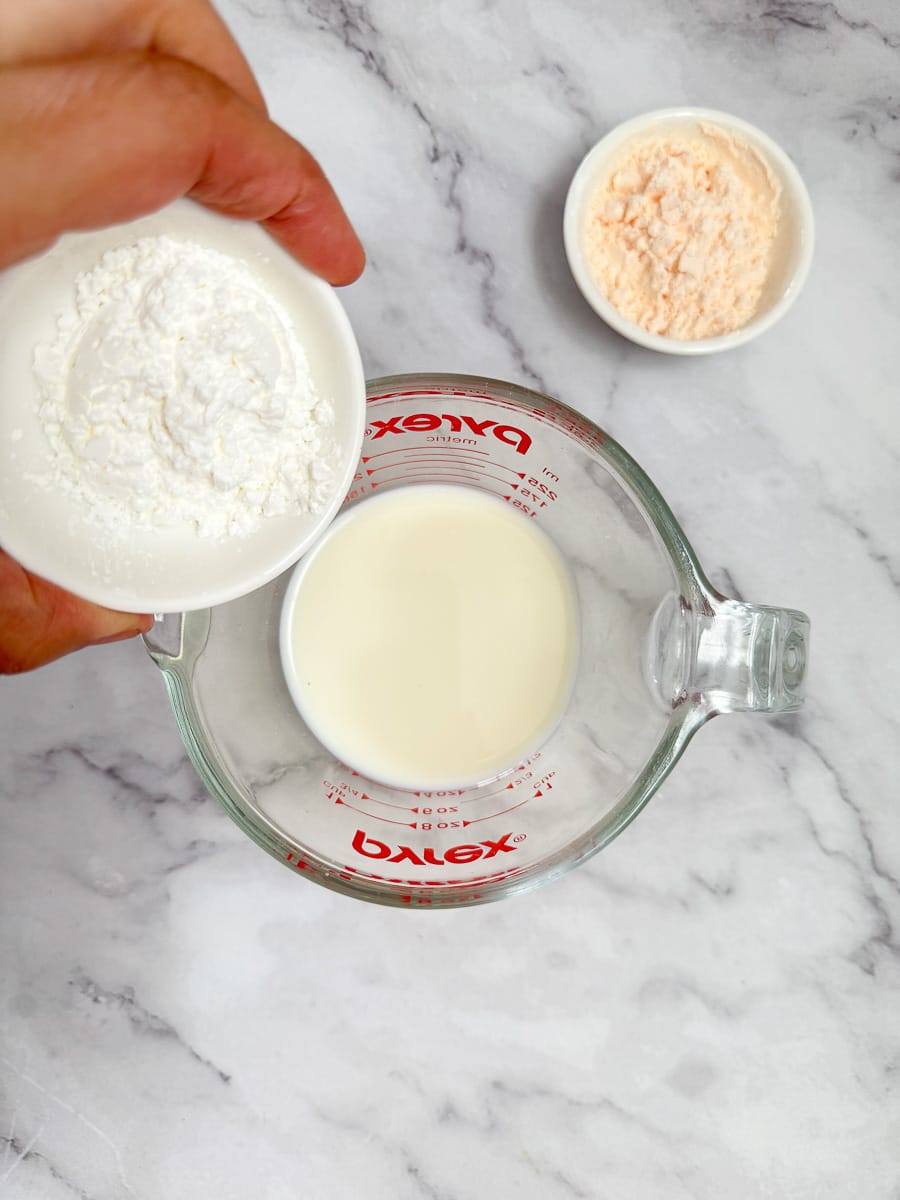
7. In a small measuring jug, dissolve the cornflour and custard powder in the extra 1/2 cup of milk.
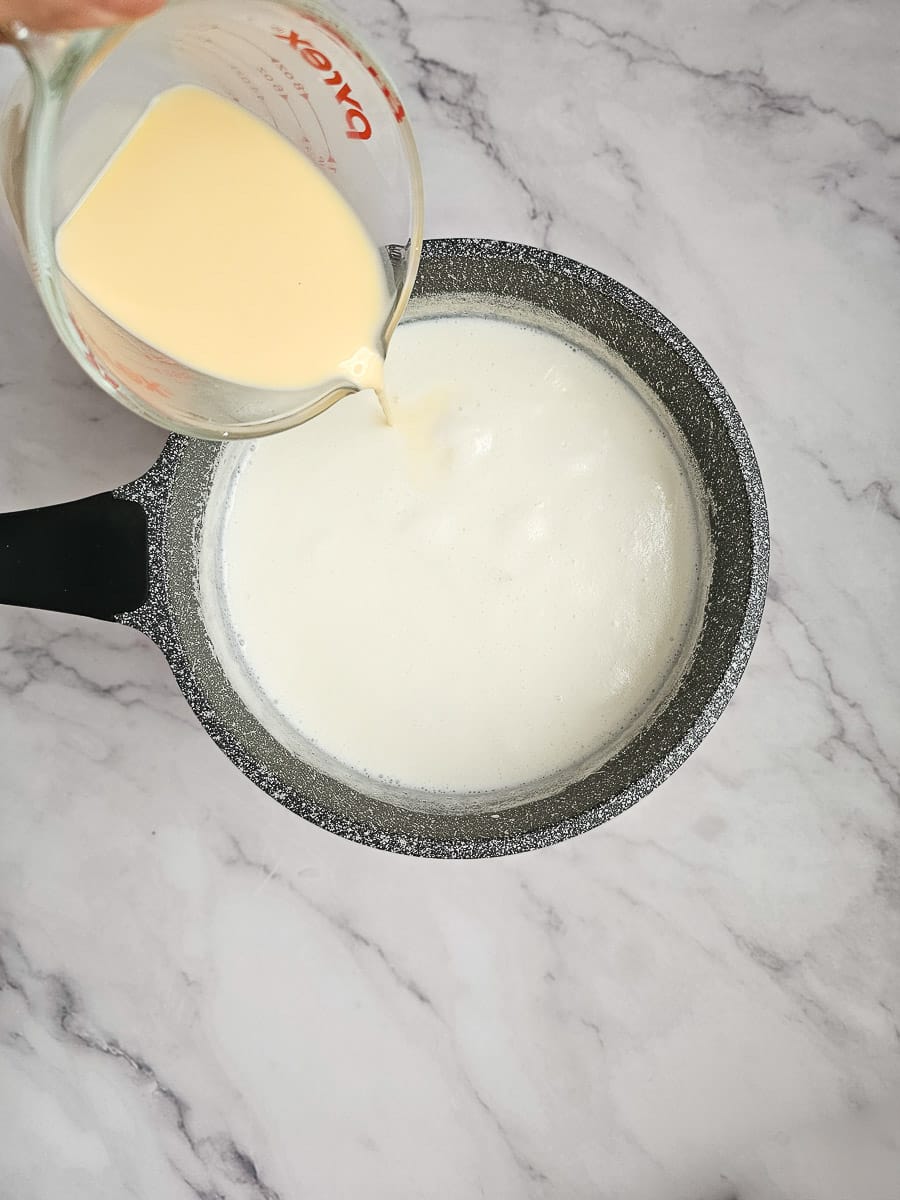
8. Pour this mixture into the saucepan.
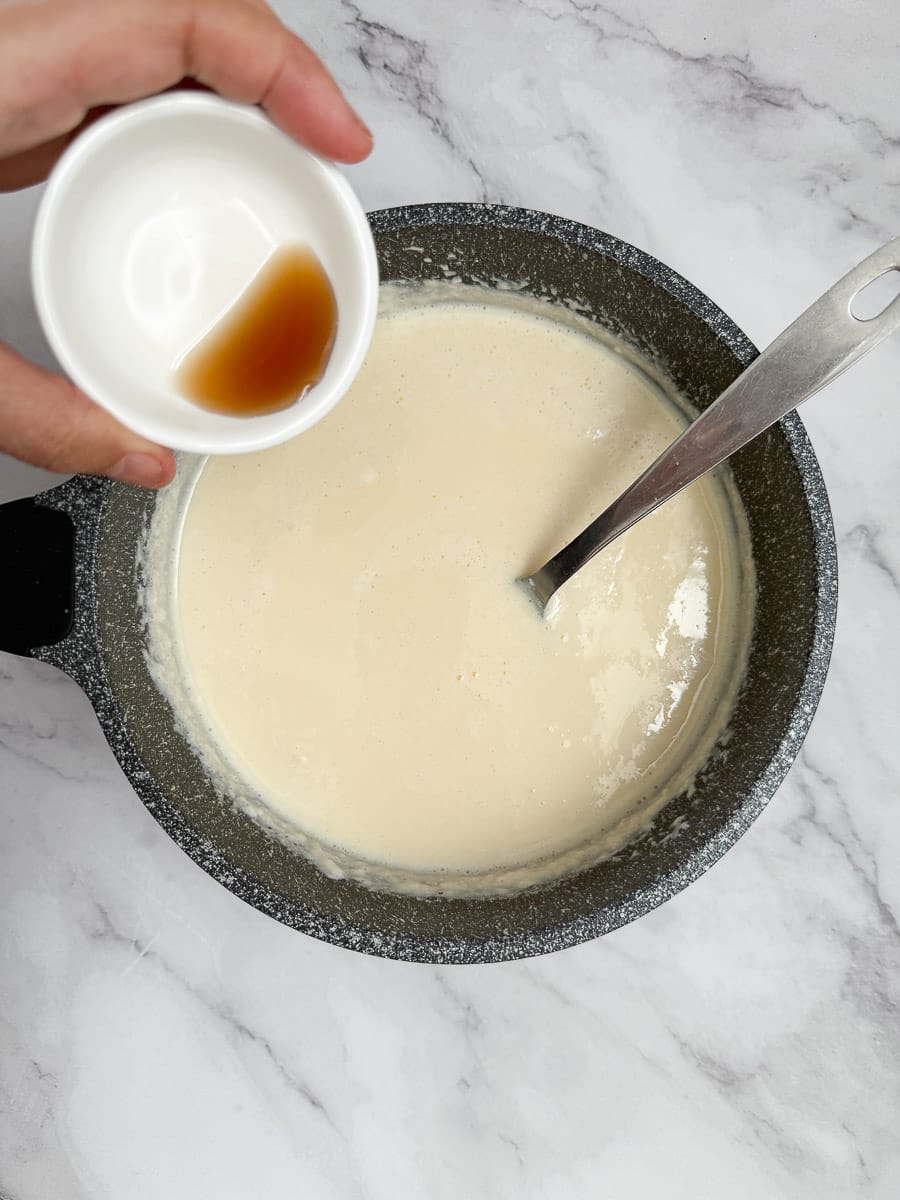
9. Add the vanilla. Taste and add more sugar if needed.
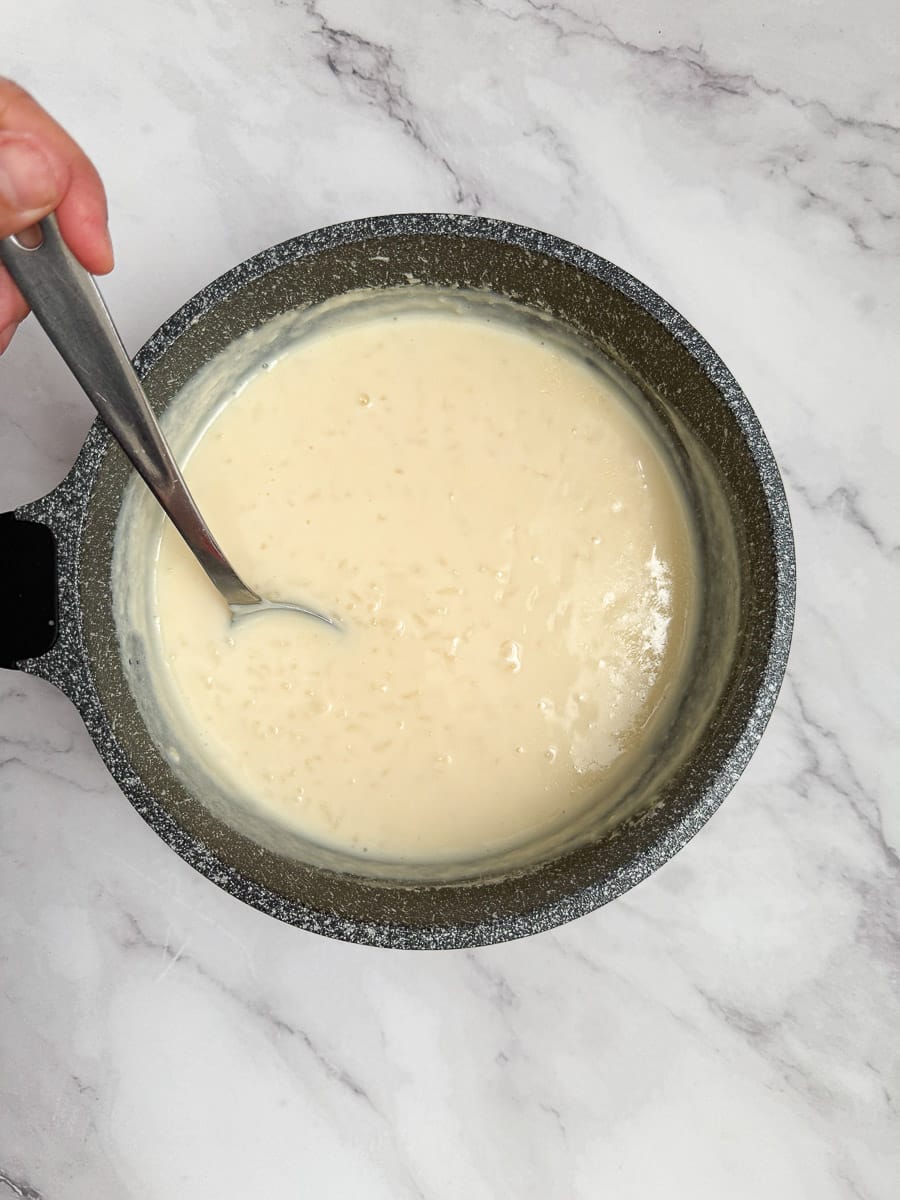
10. Bring the mixture to a gentle boil, then reduce the heat and simmer, stirring continuously for 3-5 minutes until the pudding thickens.
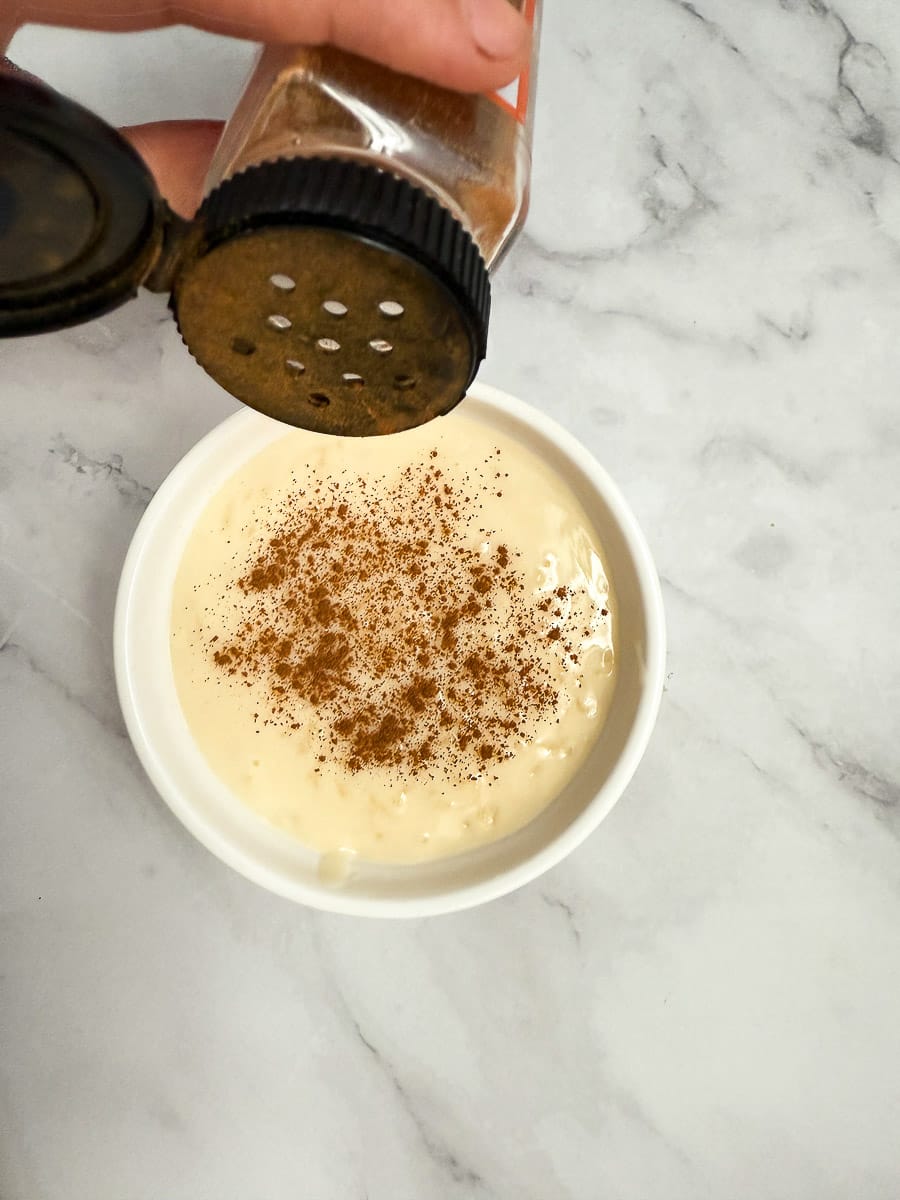
11. Remove from heat. Spoon into serving bowls, sprinkle with cinnamon and allow to cool slightly.
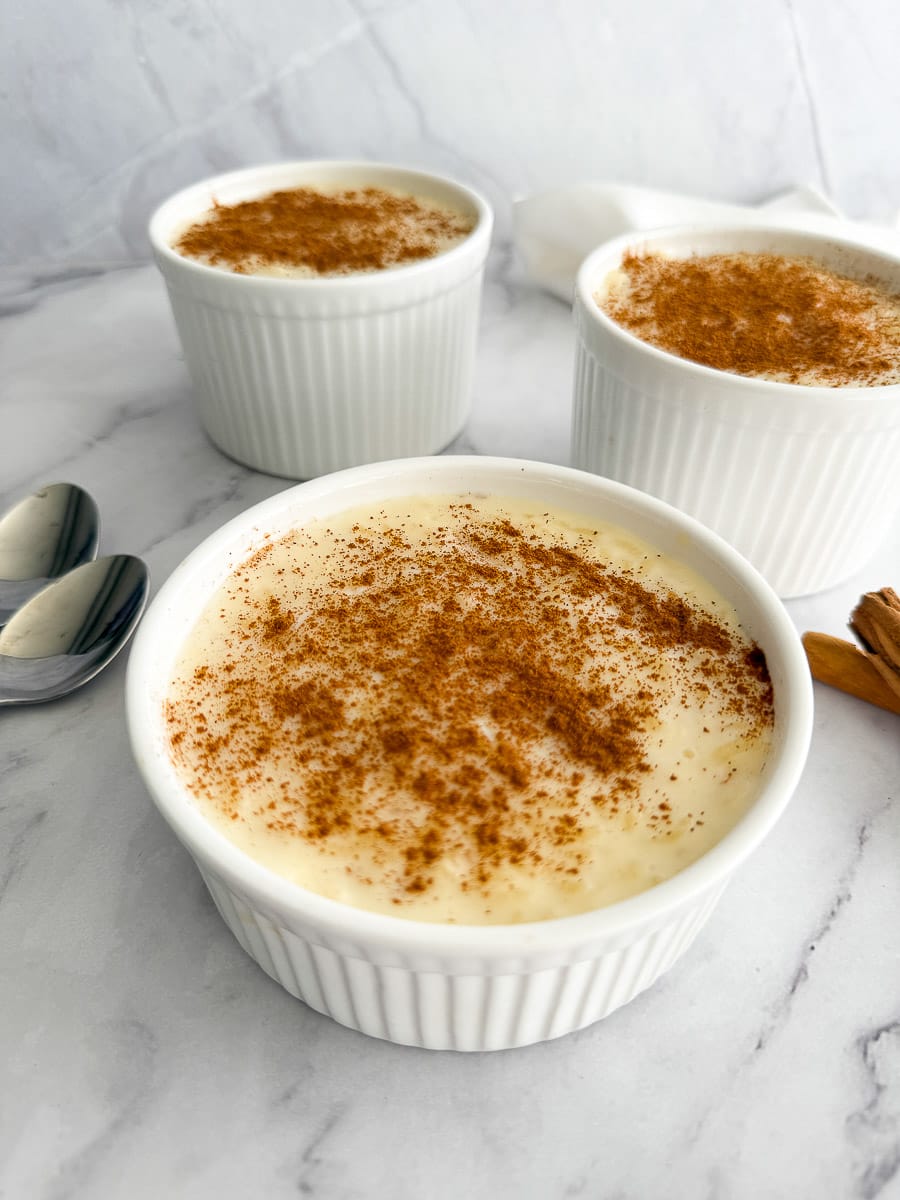
12. Serve warm or cold, depending on your preference.
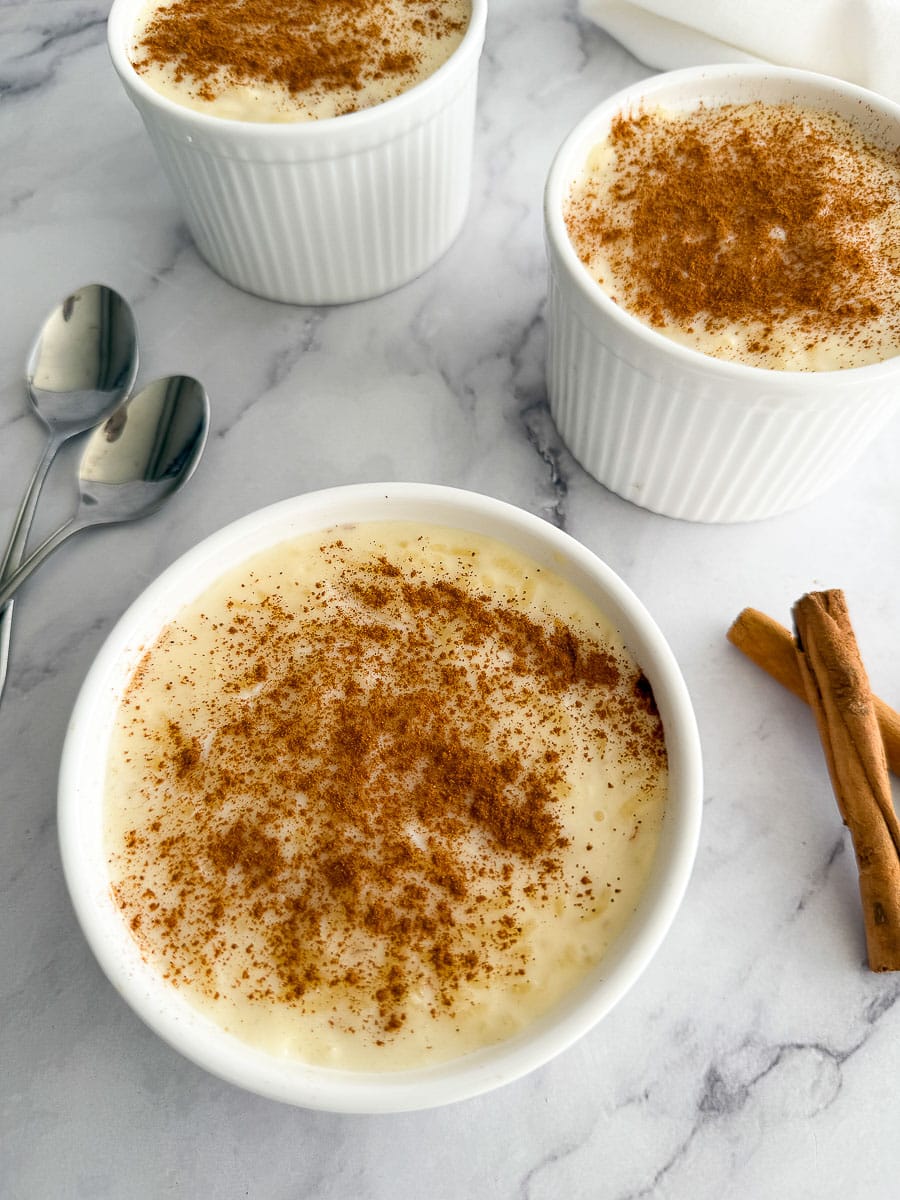
Tips for making Rizogalo (Greek Rice Pudding)
What type of rice should I use?
If you want your Rizogalo to be creamy but not too thick or sticky, medium grain rice is usually the better choice as it strikes a good balance – creamy, but light. My mum always uses medium grain rice when she makes this dish.
You can use short grain varieties such as Arborio rice, however, keep in mind that it releases more starch and makes the pudding thicker. Short grain rice may also take a little longer to cook, so you may need to add a little more water if the mixture thickens too quickly to prevent it from becoming too thick or gluey.
Can I make Rizogalo gluten-free or vegan?
Yes! To make Rizogalo gluten-free, simply use cornflour only to thicken the pudding and skip the custard powder, which sometimes contains gluten. For a vegan or dairy-free version, substitute the cow’s milk with plant-based alternatives like almond, oat, or soy milk. Keep in mind that the texture and flavour might vary slightly depending on the milk you choose, but it will still be delicious.
How do I keep my Rizogalo smooth and creamy?
To get that perfectly creamy texture, simmer the rice gently and stir regularly, especially after adding the milk and thickening mixture. this keeps the rice from catching on the bottom of the pot and helps everything to cook evenly. Stirring also prevents lumps from forming and gives the pudding a silky finish.
Can I adjust the sweetness of my Rizogalo?
Absolutely! This recipe uses a modest amount of sugar, but feel free to adjust it to your taste. if you don’t have much of a sweet tooth or want a lighter version, start with just a couple of tablespoons of sugar and add more later if needed. After adding the vanilla, taste the pudding mixture – if you like it sweeter, simply stir in a little extra sugar while it’s still warm.
Why does my Rizogalo stick to the bottom of the saucepan?
Rizogalo can stick to the bottom of the saucepan if the heat is too high or if it isn’t stirred often enough during cooking. As the mixture begins to thicken, it’s important to stir more frequently using a heatproof spatula or wooden spoon, gently scraping the base of the pot. This helps to prevent sticking and ensures a smooth and creamy texture.
How should I store leftover Rizogalo?
Store any leftover Rizogalo covered or in an airtight container in the refrigerator. It will keep well for up to three days. You can enjoy it cold, or if you prefer it warm, simply reheat it in the microwave and add a touch of milk before heating to help restore its creamy texture.
More Greek Dessert Recipes
Looking for more Greek dessert recipes? Take a look at these traditional favourites.

